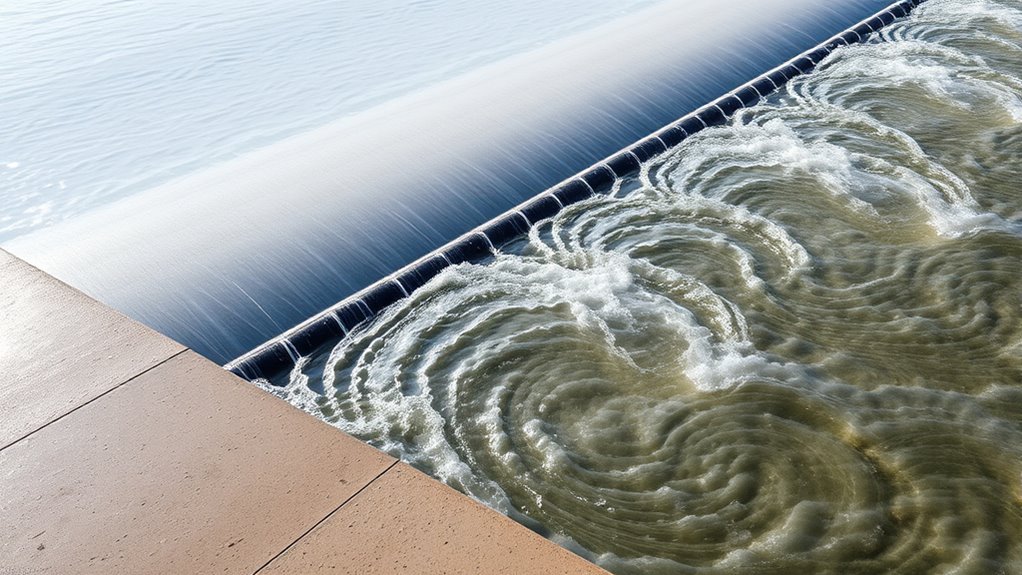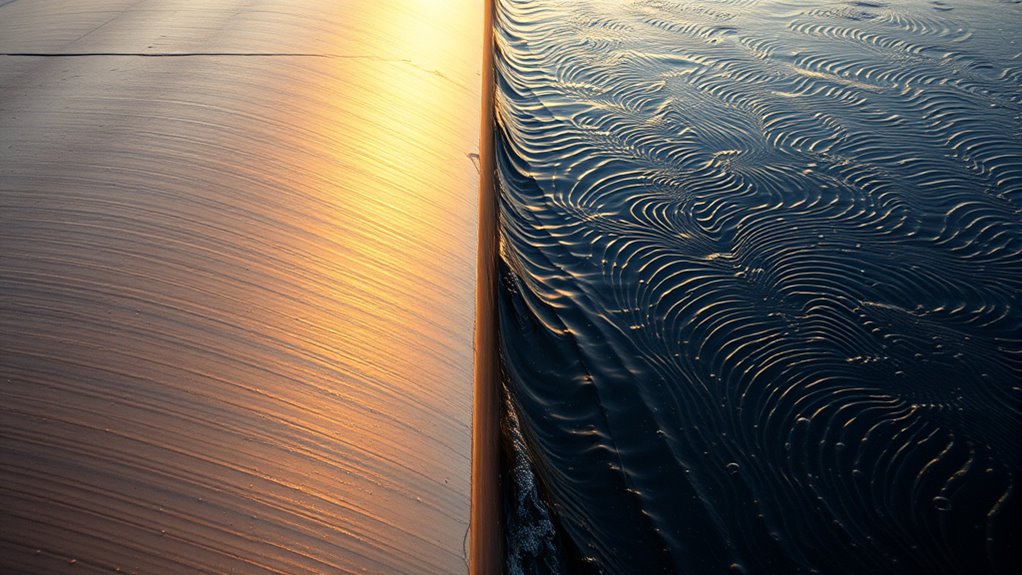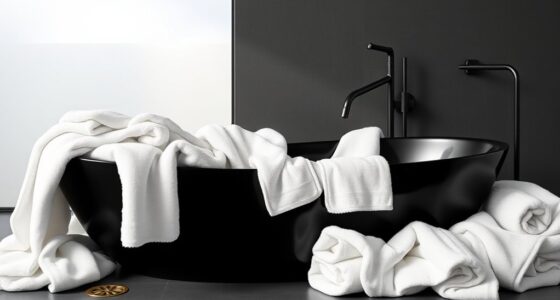Understanding the hydraulics of overflow edges helps you design safe, efficient spillways. Uniform sheets create a smooth, predictable flow, making flow measurement straightforward and ensuring maximum capacity. Rills, with stepped channels, break flow into smaller parts, enhancing energy dissipation and reducing erosion during high inflow. While uniform sheets simplify modeling, rills provide better control over flow behavior. Exploring these differences can reveal how to optimize spillway performance—so keep exploring to learn more.
Key Takeaways
- Uniform sheets provide smooth, predictable flow patterns, simplifying flow measurement and standard hydraulic modeling.
- Rills break flow into smaller channels, increasing turbulence and energy dissipation during high inflow events.
- Uniform sheets are easier to design and maintain, suitable for straightforward spillway applications.
- Rills offer better control of flow velocity and can enhance spillway stability under extreme conditions.
- Both configurations require accurate flow measurement techniques to optimize spillway performance and safety.

Understanding the hydraulics of overflow edges is essential for designing effective spillways and managing water flow. When you’re working on spillway design, understanding how water interacts with different overflow configurations determines how safely and efficiently water is released from a dam or reservoir. Whether you’re considering uniform sheets or rills, knowing how these features influence flow measurement and hydraulic behavior is key to optimizing performance and preventing failures. Uniform sheets, often used in large spillways, create a smooth, continuous surface that promotes a predictable flow pattern. This consistency simplifies flow measurement because the water’s velocity and discharge can be more accurately calculated. With a uniform sheet, you can rely on standard formulas and models to estimate flow rates, ensuring that the spillway can handle maximum inflow without overloading. However, the smooth surface also means the flow is more susceptible to hydraulic jumps or turbulence if conditions change suddenly, such as during high inflow events. Conversely, rills—small, stepped channels or grooves—break the flow into smaller streams, which can reduce erosive forces and control flow more precisely. Rills introduce a degree of turbulence that’s beneficial for dissipating energy and reducing erosion downstream. They also make flow measurement more complex because the flow isn’t uniform; instead, it varies across the rill’s surface, requiring more detailed assessment methods. When designing spillways with rills, you need to consider how the flow accelerates and dissipates within these channels, adjusting dimensions accordingly. This complexity can improve the spillway’s overall stability, especially during extreme events. Both configurations have their advantages, but understanding their hydraulics helps you decide which is best suited for specific conditions. Uniform sheets are easier to model and maintain, making them preferable for straightforward applications. Rills, on the other hand, demand more detailed analysis but can be more effective in controlling flow velocity and energy dissipation. Accurate flow measurement is vital in both cases, as it guides design decisions and safety assessments. Using advanced techniques, such as flow meters or hydraulic modeling software, you can better predict how water will behave at different stages of spillway operation. Additionally, incorporating Flow Measurement Techniques enhances the accuracy of hydraulic evaluations. Ultimately, mastering the hydraulics of overflow edges—whether uniform sheets or rills—ensures your spillway design can handle varying inflow conditions, optimize flow efficiency, and maintain structural integrity. By understanding these principles, you’re empowered to develop spillways that work effectively under all circumstances, safeguarding infrastructure and downstream environments.
Frequently Asked Questions
How Do Material Properties Affect Overflow Edge Hydraulics?
Material properties greatly influence overflow edge hydraulics; higher material strength allows for more durable edges that resist erosion, ensuring consistent flow. Surface roughness impacts water movement—rougher surfaces increase turbulence and water retention, while smoother ones promote faster runoff. You’ll notice that selecting materials with ideal strength and appropriate roughness levels helps control flow rates, reduces maintenance, and enhances overall hydraulic performance of overflow edges.
What Environmental Factors Influence Overflow Edge Performance?
You’ll notice climate variability directly impacts overflow edge performance by changing rainfall intensity and duration, which affects sediment transport and flow rates. These variations can cause erosion or sediment buildup at the edges. Wind, temperature fluctuations, and seasonal shifts also influence how effectively overflow edges manage water. By understanding these environmental factors, you can better predict and optimize overflow edge design for diverse conditions, ensuring stability and efficiency.
How Are Overflow Edges Tested in Laboratory Conditions?
You test overflow edges in laboratory conditions through hydraulic modeling, simulating real flow scenarios. You set up scaled models and observe how water interacts with the edges, using flow visualization techniques like dye tracers or transparent models. This helps you analyze flow behavior, identify potential issues, and evaluate performance. By controlling variables, you guarantee precise results, which inform design improvements for better overflow edge functionality.
What Are the Maintenance Considerations for Overflow Edges?
Think of your overflow edges as the frontline defenders of your structure. Regular inspections are crucial to spot corrosion and wear early. Keep surfaces clean, apply corrosion prevention coatings, and choose materials with high wear resistance. Address minor issues promptly to prevent costly repairs later. By maintaining these edges diligently, you guarantee they continue to perform effectively and stand strong against the forces of nature and time.
How Do Overflow Edge Designs Vary for Different Fluid Types?
You should consider that overflow edge designs vary based on fluid viscosity and surface tension. For high-viscosity fluids, you might need wider or smoother edges to minimize resistance and promote smooth flow. When dealing with fluids with high surface tension, you’ll want to design edges that reduce droplet formation or splashing. Adjust your overflow edges accordingly to optimize flow, prevent clogging, and guarantee safety based on the specific fluid properties.
Conclusion
You see, understanding the hydraulics of overflow edges helps you visualize how water flows over uniform sheets versus rills. By examining their behaviors, you can better predict erosion patterns and design effective spillways. The theory that rills concentrate flow and increase erosion holds true, creating distinct visual patterns compared to smooth sheets. This insight allows you to anticipate water movement, making your projects more efficient and resilient against erosion and flooding.










